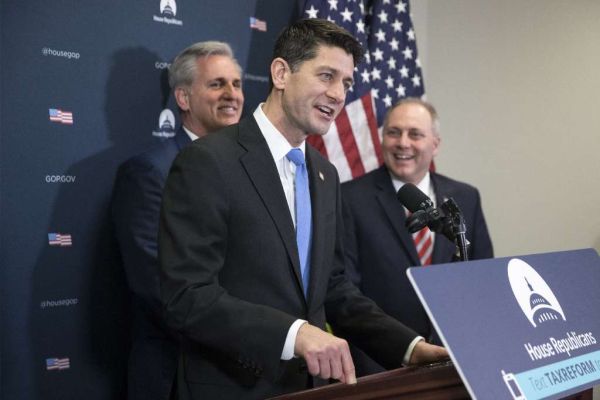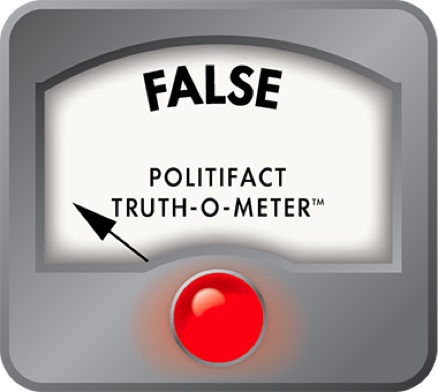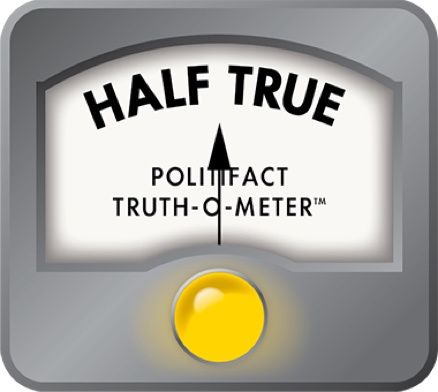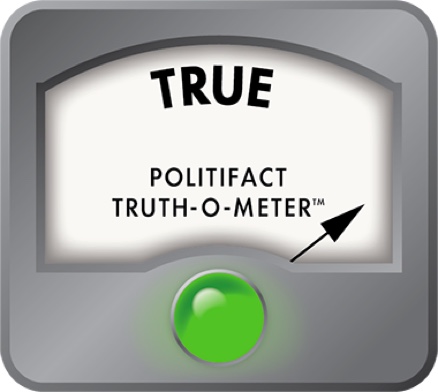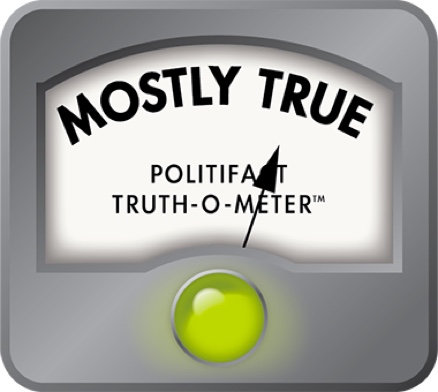Stand up for the facts!
Our only agenda is to publish the truth so you can be an informed participant in democracy.
We need your help.
I would like to contribute
As Congress nears passage of a Republican-backed tax bill, there’s been a lot of discussion about who will benefit and who won’t. Here is some data about the winners and losers under the bill.
We’re using data from two sources. One is the Joint Committee on Taxation, the nonpartisan group that analyzes tax bills for Congress. The other is the Urban Institute-Brookings Institution Tax Policy Center, an independent group that models the effects of tax legislation. Both groups analyzed previous versions of the bill, but in this article we’ll look at their analyses of the final version that, assuming it passes and is signed by President Donald Trump, will become law.
We’ll look at a few key issues.
• Will poor, middle-class and rich Americans all benefit, on average?
• Are the gains for each income group proportionate to their share of the tax-paying population?
• Can taxpayers expect any gains to last?
Here’s our first chart, which uses Joint Committee on Taxation data. It shows how various income ranges would fare in 2019 -- the first year the committee looked at -- under the bill. We’ve listed the overall change in taxes paid for each income group, with cuts noted as negative and increases noted as positive (the second column). We then calculated the share of those gains received by each income range (the third column), and compared that to the percentage of taxpayers who fall into that income range (the fourth column).
Income range
Total change in federal taxes in 2019
Share of reductions in taxes in 2019
Percentage of all taxpayers falling in this income range in 2019
Less than $10,000
- $396 million
0.2 percent
11 percent
$10,000 to $20,000
- $1,792 million
0.7 percent
12 percent
$20,000 to $30,000
- $2,982 million
1.1 percent
12 percent
$30,000 to $40,000
- $5,416 million
2 percent
9 percent
$40,000 to $50,000
- $6,728 million
2.6 percent
7 percent
$50,000 to $75,000
- $23,046 million
9 percent
15 percent
$75,000 to $100,000
- $22,437 million
9 percent
10 percent
$100,000 to $200,000
- $70,372 million
27 percent
17 percent
$200,000 to $500,000
- $65,485 million
25 percent
5 percent
$500,000 to $1,000,000
- $23,947 million
9 percent
0.6 percent
$1,000,000 and over
- $36,853 million
14 percent
0.3 percent
Total
- $259,454 million
100 percent
100 percent
The good news for taxpayers is that every income group would pay less in taxes in 2019. (This is the case for these income groups as a whole -- individual taxpayers may not necessarily gain. More on that in a moment.)
That said, the benefits of the tax bill would flow disproportionately to wealthier taxpayers.
About half of the households filing returns had incomes below $50,000, according to the Joint Committee on Taxation, but they collectively get just 6.6 percent of the tax gains in the bill.
By contrast, only about 1 percent of households filing returns had incomes above $500,000, but they stand to gain 23 percent of the benefits from the bill. (It’s worth noting that the United States has a progressive tax system, which means that taxpayers with higher incomes pay a larger share of their income in taxes. So it’s not surprising that wealthier taxpayers would receive a greater share of the benefits in a tax bill.)
So what happens further in the future? Here’s the Joint Committee on Taxation analysis of the tax bill’s impacts in 2027:
Income range
Total change in federal taxes in 2027
Share of reductions in taxes in 2027
Share of returns in this income range in 2027
Less than $10,000
+ $383 million
0 percent
10 percent
$10,000 to $20,000
+ 6,487 million
0 percent
11 percent
$20,000 to $30,000
+ $8,359 million
0 percent
12 percent
$30,000 to $40,000
+ $4,864 million
0 percent
9 percent
$40,000 to $50,000
+ $4,317 million
0 percent
8 percent
$50,000 to $75,000
+ $4,060 million
0 percent
15 percent
$75,000 to $100,000
- $1,037 million
4 percent
10 percent
$100,000 to $200,000
- $5,993 million
24 percent
18 percent
$200,000 to $500,000
- $5,890 million
24 percent
5 percent
$500,000 to $1,000,000
- $3,099 million
13 percent
0.7 percent
$1,000,000 and over
- $8,495 million
35 percent
0.3 percent
Total
+ 3,958 million
100 percent
100 percent
By 2027, every income group below $75,000 sees a tax increase. Only those income ranges above $75,000 still see a cut by 2027. That’s a significantly different pattern than in 2019, when every group saves, on average.
Meanwhile, if you look at the income groups who gain in 2027, there’s an even stronger skew toward the wealthiest taxpayers. The top 1 percent of taxpayers -- those earning at least $500,000 -- take 48 percent of the gains.
Why the big changes by 2027? The primary reason is that some of the individual tax cuts phase out in 2025. In addition, some of the inflation adjustments used under the bill are less generous than the current ones.
Now remember that the previous charts reflected the cumulative gains for each income range. However, the fact that members of an income range gain collectively doesn’t mean that every single member of that income group is better off -- it just means that, on average, gains outpace losses. The reality is that some taxpayers in every income group will lose, even when their group gains as a whole.
To get at this question, we’ve used data from the Tax Policy Center showing the projected breakdown between gainers and losers under the tax bill. First, let’s look at what happens in 2018. (Note: The center uses percentiles to define income ranges, rather than the dollar amounts used by the Joint Committee on Taxation, and it also chose to publish its analysis for 2018 rather than 2019.)
Income range
Percentage with a tax cut in 2018
Average tax cut for those with a cut
Percentage with a tax increase in 2018
Average tax increase for those with an increase
Lowest 20 percent
53.9 percent
- $130
1.2 percent
$810
20th to 40th percentile
86.8 percent
- $480
4.6 percent
$740
40th to 60th percentile
91.3 percent
- $1,090
7.3 percent
$910
60th to 80th percentile
92.5 percent
- $2,070
7.3 percent
$1,360
80th to 90th percentile
92.3 percent
- $3,370
7.6 percent
$1,800
90th to 95th percentile
94.4 percent
- $4,910
5.5 percent
$1,890
95th to 99th percentile
97.3 percent
- $13,890
2.7 percent
$8,260
Top 1 percent
90.7 percent
- $61,940
9.3 percent
$93,910
Top 0.1 percent
83.7 percent
- $285,490
16.2 percent
$387,610
For 2018, the likelihood of benefiting from the bill isn’t 100 percent, but for every group, there are many more gainers than there are losers. Indeed, for all but the top 1 percent, no income group has more than a 7.6 percent chance that of losing ground under the tax bill in 2018.
So what happens by 2027?
Income range
Percentage with a tax cut in 2027
Average tax cut for those with a cut
Percentage with a tax increase in 2027
Average tax increase for those with an increase
Lowest 20 percent
11.1 percent
- $120
32.6 percent
$90
20th to 40th percentile
23.3 percent
- $280
57.7 percent
$140
40th to 60th percentile
24.4 percent
- $520
69.7 percent
$150
60th to 80th percentile
33.2 percent
- $680
64.2 percent
$190
80th to 90th percentile
38.1 percent
- $1,150
60.5 percent
$300
90th to 95th percentile
50.2 percent
- $1,320
48.7 percent
$450
95th to 99th percentile
58 percent
- $3,510
41.5 percent
$740
Top 1 percent
75.9 percent
- $39,690
23.8 percent
$1,250
Top 0.1 percent
91.9 percent
- $206,280
8 percent
$3,200
Notice how the benefits shrink for most taxpayers in 2027.
Almost 76 percent of households in the top 1 percent would see a tax cut. And almost 92 percent of households in the top 0.1 percent would see a tax cut. The top 1 percent in 2027 are projected to earn $912,000, and the top 0.1 percent is projected to be making more than $5 million a year.
But fewer than one-third of taxpayers in the bottom 80 percent of the income spectrum would see a tax cut in 2027.
Our Sources
Joint Committee on Taxation, "Distributional Effects Of The Conference Agreement For H.R.1, The Tax Cuts And Jobs Act," Dec. 18, 2017
Urban Institute-Brookings Institution Tax Policy Center, "Distributional Analysis of the Conference Agreement for the Tax Cuts and Jobs Act," Dec. 18, 2017

